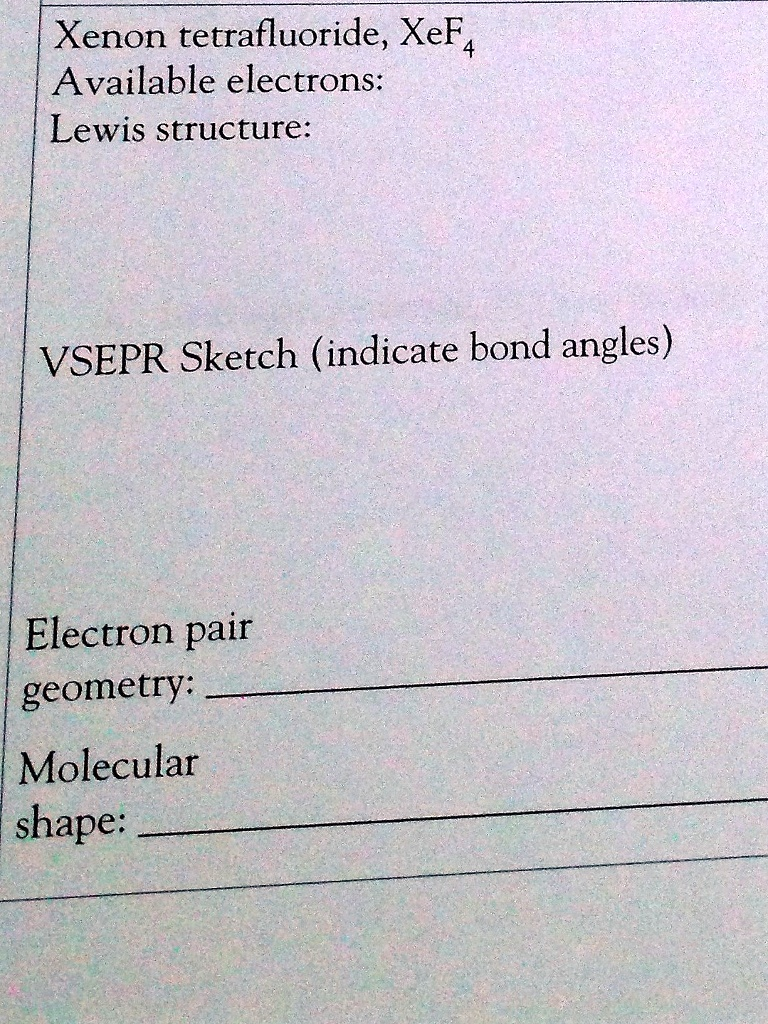Xenon tetrafluoride, XeF
Available electrons: Lewis structure: VSEPR Sketch (indicate bond angles) Electron pair geometry: Molecular shape:

The Correct Answer and Explanation is:
Here’s a breakdown of the correct answers for xenon tetrafluoride (XeF₄):
- Available electrons: 36 valence electrons
- Lewis structure: Xenon is in the center, forming single bonds with four fluorine atoms. Each fluorine has three lone pairs, and xenon retains two lone pairs.
- VSEPR Sketch (bond angles): Four fluorine atoms are arranged in a square around xenon, with 90° bond angles between them. The two lone pairs occupy positions above and below the plane.
- Electron pair geometry: Octahedral
- Molecular shape: Square planar
Explanation:
Xenon tetrafluoride is a noble gas compound in which xenon forms bonds despite its usual chemical inertness. To determine its structure, start with valence electrons. Xenon contributes 8 electrons, and each fluorine contributes 7. With four fluorines, that results in 28 from fluorine and a total of 36 valence electrons.
In the Lewis structure, four electrons form Xe–F bonds, and each fluorine atom retains three lone pairs to complete its octet. After accounting for bonding electrons and lone pairs on fluorine, xenon is left with two lone pairs. These are placed opposite each other to reduce electron repulsion, based on Valence Shell Electron Pair Repulsion (VSEPR) theory.
Considering all six regions of electron density around xenon—four bonding pairs and two lone pairs—the electron pair geometry is classified as octahedral. However, molecular shape describes only atom positions. Since the lone pairs occupy two of the six positions and fluorines occupy the remaining four in one plane, the molecular shape becomes square planar.
The fluorine atoms form 90° bond angles, lying in a plane with xenon at the center. The two lone pairs are orthogonal to this plane, allowing the molecule to minimize repulsion and stabilize its geometry. XeF₄’s square planar structure influences its physical properties, such as its polarizability and reactivity with other fluorinating agents.
